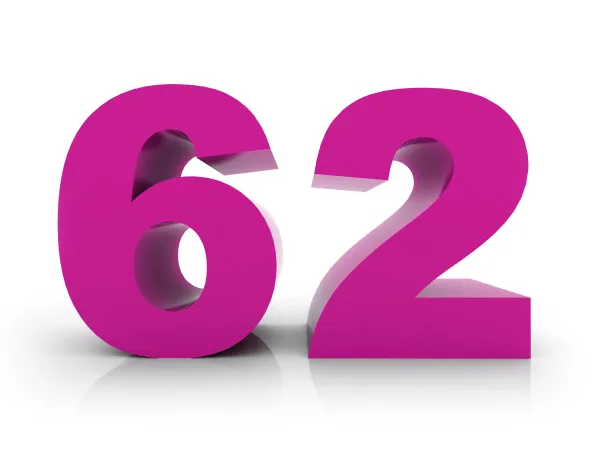Otolaryngology Coding Alert
Prep for These Sweeping CMS-Proposed E/M Changes in 2019
Get to know how these new CMS proposed rules might affect your practice.
Fee schedule changes to most evaluation and management (E/M) services have been relatively safe from CMS intervention over the past few years. As for 2019, however, it’s looking like otolaryngology practices, among other specialties, may have to prepare for some crucial CMS revisions to how they bill, document, and pay for E/M services— which could have a profound impact on your practice’s bottom line.
Take a look at these new incoming policies and changes to the E/M reimbursement structure to understand how your practice may be positively — or negatively — affected.
Understand How Proposal Affects E/M Payment Rates
Background: CMS released its proposed Medicare Physician Fee Schedule (MPFS) for 2019 on July 12, and it includes what the agency is calling “historic” E/M documentation changes to the outpatient office visit codes (99201-99215). Those changes include the following:
- Use medical decision-making or time for outpatient E/M versus the current guidelines.
- Give physicians the option of using time as a factor even if counseling or care coordination are part of the medical equation.
- Put re-documenting aside and let providers “focus their documentation on what has changed since the last visit or on pertinent items that have not changed,” says CMS.
- Give practitioners the option of accepting data plugged in by staff instead of timely re-entering.
If this sounds so appealing that you’re wondering if there’s a “catch,” note that there is. CMS is proposing “new, single blended payment rates for new and established patients for office/outpatient E/M level 2 through 5 visits and a series of add-on codes to reflect resources involved in furnishing primary care and non-procedural specialty generally recognized services,” the agency said in a Fact Sheet about the change. The payment levels are proposed as follows:
- 99212-99215: $93 for each of these codes
- 99202-99205: $135 for each of these codes.
This would mean that payments for level five codes would go down, while pay for level two codes would go up. Practices that report a lot of level five codes (ie, practices who care for more complex patients that others) would be likely to lose money, but some practices would see gains, says Cyndee Weston, CPC, CMC, CMRS, executive director of the American Medical Billing Association (AMBA) in Davis, Oklahoma.
Check Out These 3 ENT Examples of How Pay Could Change
To determine the impact that this change might have on otolaryngology care practices, Otolaryngology Coding Alert reviewed the utilization data for three different otolaryngology care practices and calculated how it would impact each of them.
These calculations assume that the otolaryngologists will earn $93 for each of the following codes under the proposal, and that they currently bring in the following average reimbursement for 99212 (Office or other outpatient visit for the evaluation and management of an established patient, which requires at least 2 of these 3 key components: a problem focused history; a problem focused examination; and straightforward medical decision making …) -99215 (… a comprehensive history; a comprehensive examination; medical decision making of high complexity …) based on the 2018 fee schedule:
- 99212: $45.
- 99213: $75.
- 99214: $109.
- 99215: $148.
Impact to Practice 1: Otolaryngologist in South Florida:
- 99212: Billed 28 times in one year – worth $1,260 today, worth $2,604 under proposal.
- 99213: Billed 46 times in one year – worth $3,450 today, worth $4,278 under proposal.
- 99214: Billed 399 times in one year – worth $43,491 today, worth $37,107 under proposal.
- 99215: Billed 91 times in one year – worth $13,468 today, worth $8,463 under proposal.
Total difference: This practice earned $61,669 for these four codes under today’s payment structure, and would earn $52,452 under the proposal. This practice would see $9,217 less pay under the proposal for these four codes.
Impact to Practice 2: Otolaryngologist in Western Kentucky:
- 99212: Billed 22 times in one year – worth $990 today, worth $2,046 under proposal.
- 99213: Billed 469 times in one year – worth $35,175 today, worth $43,617 under proposal.
- 99214: Billed 104 times in one year – worth $11,336 today, worth $9,672 under proposal.
- 99215: Billed 63 times in one year – worth $9,324 today, worth $5,859 under proposal.
Total difference: This practice earned $56,825 for these four codes under today’s payment structure, and would earn $61,194 under the proposal. This practice would see $4,369 more pay under the proposal for these four codes.
Impact to Practice 3: Otolaryngologist in Northwestern California:
- 99212: Billed 31 times in one year – worth $1,395 today, worth $2,883 under proposal.
- 99213: Billed 86 times in one year – worth $6,450 today, worth $7,998 under proposal.
- 99214: Billed 744 times in one year – worth $81,096 today, worth $69,192 under proposal.
- 99215: Billed 1,531 times in one year – worth $226,588 today, worth $142,383 under proposal.
Total difference: This practice earned $315,529 for these four codes under today’s payment structure, and would earn $222,456 under the proposal. This practice would see $93,073 less pay under the proposal for these four codes.
Bottom line: One of the three practices would come out better under the proposal than it does now, but the two practices with higher utilization of levels four and five would lose money under the proposed changes. Of course, this doesn’t mean your otolaryngologist will necessarily model the same results as these practices. If you know how frequently you reported each of these codes, you can perform a similar calculation to determine how the change would affect you.
Would Documentation Guidelines Hurt You?
Keep in mind that if the proposal is finalized, you would have to be ready to code your charts based on new criteria. For instance, if the code level ends up being based on medical decision making (MDM) rather than the current method of history, MDM, and exam, there could be a learning curve for some practices, says Michael Granovsky, MD, FACEP, CPC, president of LogixHealth, a national coding and billing company based in Bedford, Massachusetts. “MDM can be subjective – the risk table is not black and white unless you’re using the intervention column, which is probably historically the least relevant.”
Certainly, the inclusion of a suggested E/M change in the fee schedule proposal doesn’t mean that a change will actually happen. Keep an eye on Otolaryngology Coding Alert for all the latest on whether CMS moves toward finalizing these proposals.
Resource: For a closer look at the MPFS proposed rule for CY 2019, visit https://s3.amazonaws.com/public-inspection.federalregister.gov/2018-14985.pdf.
Related Articles
Otolaryngology Coding Alert
- CPT® Coding:
Use These Tips, Examples to Enhance Microlaryngoscopic Coding Skills
Plus, know what circumstances warrant reporting an unlisted code. Knowing your way around the broad [...] - Emerging Technology:
Code Accordingly When Introducing SINUVA™, PROPEL™ Implants to Your Practice
Identify differences between surgical techniques and coding considerations. Across ENT practices nationwide, physicians are turning [...] - 2019 E/M Proposals:
Prep for These Sweeping CMS-Proposed E/M Changes in 2019
Get to know how these new CMS proposed rules might affect your practice. Fee schedule [...] - You Be the Coder:
Check Status Indicators Before Billing Bilaterally
Question: Can you bill CPT® code 42808 bilaterally? Michigan Subscriber Answer: In order to determine [...] - Reader Question:
Discern Between Incision, Approach With Aural Glomus Tumor Excisions
Question: What CPT® code should I use to report a transcanal excision of an aural [...] - Reader Question:
Code Smoker of Any Frequency as Nicotine Dependent
Question: We have a patient with chronic obstructive pulmonary disease (COPD) who currently smokes tobacco [...]




